Applied Mathematical Sciences
Volume 147
Editors
S.S. Antman J.E. Marsden L. Sirovich
Advisors
J.K. Hale P. Holmes J. Keener
J. Keller B.J. Matkowsky A. Mielke
C.S. Peskin K.R. Sreenivasan
�
Applied Mathematical Sciences
1. John: Partial Differential Equations, 4th ed.
2. Sirovich: Techniques of Asymptotic Analysis.
3. Hale: Theory of Functional Differential
Equations, 2nd ed.
4. Percus: Combinatorial Methods.
5. von Mises/Friedrichs: Fluid Dynamics.
6. Freiberger/Grenander: A Short Course in
Computational Probability and Statistics.
7. Pipkin: Lectures on Viscoelasticity Theory.
8. Giacaglia: Perturbation Methods in Non-
linear Systems.
33. Grenander: Regular Structures: Lectures in
Pattern Theory, Vol. III.
34. Kevorkian/Cole: Perturbation Methods in
Applied Mathematics.
35: Carr: Applications of Centre Manifold
Theory.
36. Bengtsson/Ghil/Källén: Dynamic
Meteorology: Data Assimilation Methods.
37. Saperstone: Semidynamical Systems in
Infinite Dimensional Spaces.
38. Lichtenberg/Lieberman: Regular and Chaotic
9. Friedrichs: Spectral Theory of Operators in
Dynamics, 2nd ed.
Hilbert Space.
39. Piccini/Stampacchia/Vidossich: Ordinary
10. Stroud: Numerical Quadrature and Solution
Differential Equations in Rn.
of Ordinary Differential Equations.
11. Wolovich: Linear Multivariable Systems.
12. Berkovitz: Optimal Control Theory.
13. Bluman/Cole: Similarity Methods for
Differential Equations.
14. Yoshizawa: Stability Theory and the
Existence of Periodic Solution and Almost
Periodic Solutions.
15. Braun: Differential Equations and Their
Applications, Fourth Edition.
16. Lefschetz: Applications of Algebraic
Topology.
17. Collatz/Wetterling: Optimization Problems.
18. Grenander: Pattern Synthesis: Lectures in
Pattern Theory, Vol. I.
40. Naylor/Sell: Linear Operator Theory in
Engineering and Science.
41. Sparrow: The Lorenz Equations:
Bifurcations, Chaos, and Strange Attractors.
42. Guckenheimer/Holmes: Nonlinear
Oscillations, Dynamical Systems, and
Bifurcations of Vector Fields.
43. Ockendon/Taylor: Inviscid Fluid Flows.
44. Pazy: Semigroups of Linear Operators and
Applications to Partial Differential
Equations.
45. Glashoff/Gustafson: Linear Operations and
Approximation: An Introduction to the
Theoretical Analysis and Numerical
Treatment of Semi-Infinite Programs.
19. Marsden/McCracken: Hopf Bifurcation and
46. Wilcox: Scattering Theory for Diffraction
Its Applications.
Gratings.
20. Driver: Ordinary and Delay Differential
47. Hale et al.: Dynamics in Infinite
Equations.
21. Courant/Friedrichs: Supersonic Flow and
Shock Waves.
22. Rouche/Habets/Laloy: Stability Theory by
Liapunov’s Direct Method.
Dimensions.
48. Murray: Asymptotic Analysis.
49. Ladyzhenskaya: The Boundary-Value
Problems of Mathematical Physics.
50. Wilcox: Sound Propagation in Stratified
23. Lamperti: Stochastic Processes: A Survey of
Fluids.
the Mathematical Theory.
24: Grenander: Pattern Analysis: Lectures in
Pattern Theory, Vol. II.
25. Davies: Integral Transforms and Their
Applications, Third Edition.
26. Kushner/Clark: Stochastic Approximation
Methods for Constrained and
Unconstrained Systems.
27. de Boor: A Practical Guide to Splines,
Revised Edition.
51. Golubitsky/Schaeffer: Bifurcation and
Groups in Bifurcation Theory, Vol. I.
52. Chipot: Variational Inequalities and Flow in
Porous Media.
53. Majda: Compressible Fluid Flow and
System of Conservation Laws in Several
Space Variables.
54. Wasow: Linear Turning Point Theory.
55. Yosida: Operational Calculus: A Theory of
Hyperfunctions.
28. Keilson: Markov Chain Models-Rarity and
56. Chang/Howes: Nonlinear Singular
Exponentiality.
29. de Veubeke: A Course in Elasticity.
30. Sniatycki: Geometric Quantization and
Quantum Mechanics.
31: Reid: Sturmian Theory for Ordinary
Differential Equations.
32. Meis/Markowitz: Numerical Solution of
Partial Differential Equations.
Perturbation Phenomena: Theory and
Applications.
57. Reinhardt: Analysis of Approximation
Methods for Differential and Integral
Equations.
58. Dwoyer/Hussaini/Voigt (eds): Theoretical
Approaches to Turbulence.
(continued after index)
�
Gilles Aubert Pierre Kornprobst
Mathematical Problems in
Image Processing
Partial Differential Equations and the
Calculus of Variations
Second Edition
�
Gilles Aubert
Université de Nice Sophia-Antipolis
CNRS UMR 6621
Laboratoire J.A. Dieudonné
Parc Valrose
06108 NICE CX 2
France
gaubert@math.unice.fr
Pierre Kornprobst
INRIA, Projet Odyssée
2004 route des lucioles - BP 93
06902 SOPHIA ANTIPOLIS
France
Pierre.Kornprobst@sophia.inria.fr
Editors:
S.S. Antman
Department of Mathematics
and
Institute for Physical Science
and Technology
University of Maryland
College Park, MD 20742-4015 USA
USA
ssa@math.umd.edu
J.E. Marsden
Control and Dynamical
Systems, 107-81
California Institute of
Technology
Pasadena, CA 91125
L. Sirovic
Laboratory of Applied
Mathematics
Department of
Biomathematical
Sciences
Mount Sinai School
New York, NY 10029-6574
USA
chico@camelot.mssm.edu
marsden@cds.caltech.edu
of Medicine
Mathematics Subject Classification (2000): 35J, 35L, 35Q, 49J, 49N
Library of Congress Control Number: 2006926450
ISBN-10: 0-387-32200-0
ISBN-13: 978-0387-32200-1
e-ISBN 0-387-21766-5
Printed on acid-free paper.
© 2006 Springer Science +Business Media, LLC
All rights reserved. This work may not be translated or copied in whole or in part without the
written permission of the publisher (Springer Science +Business Media, LLC, 233 Spring Street,
New York, NY 10013, USA), except for brief excerpts in connection with reviews or scholarly
analysis. Use in connection with any form of information storage and retrieval, electronic
adaptation, computer software, or by similar or dissimilar methodology now known or hereafter
developed is forbidden.
The use in this publication of trade names, trademarks, service marks, and similar terms, even if
they are not identified as such, is not to be taken as an expression of opinion as to whether or
not they are subject to proprietary rights.
Printed in the United States of America.
(EB)
9 8 7 6 5 4 3 2 1
springer.com
�
To Jean-Michel Morel, whose ideas
have deeply influenced the mathematical
vision of image processing.
�
Foreword
Image processing, image analysis, computer vision, robot vision, and ma-
chine vision are terms that refer to some aspects of the process of computing
with images. This process has been made possible by the advent of com-
puters powerful enough to cope with the large dimensionality of image data
and the complexity of the algorithms that operate on them.
In brief, these terms differ according to what kind of information is used
and output by the process. In image processing the information is mostly
the intensity values at the pixels, and the output is itself an image; in image
analysis, the intensity values are enriched with some computed parameters,
e.g., texture or optical flow, and by labels indicating such things as a region
number or the presence of an edge; the output is usually some symbolic
description of the content of the image, for example the objects present
in the scene. Computer, robot, and machine vision very often use three-
dimensional information such as depth and three-dimensional velocity and
perform some sort of abstract reasoning (as opposed to purely numerical
processing) followed by decision-making and action.
According to this rough classification this book deals with image
processing and some image analysis.
These disciplines have a long history that can be traced back at least
to the early 1960s. For more than two decades, the field was occupied
mostly by computer scientists and electrical engineers and did not attract
much interest from mathematicians. Its rather low level of mathematical
sophistication reflected the kind of mathematical training that computer
scientists and electrical engineers were exposed to and, unfortunately, still
are: It is roughly limited to a subset of nineteenth-century mathematics.
�
viii
Foreword
This is one reason. Another reason stems from the fact that simple heuristic
methods, e.g., histogram equalization, can produce apparently startling
results; but these ad hoc approaches suffer from significant limitations, the
main one being that there is no precise characterization of why and when
they work or don’t work. The idea of the proof of correctness of an algorithm
under a well-defined set of hypotheses has long been almost unheard of in
image processing and analysis despite the strong connection with computer
science.
It is clear that things have been changing at a regular pace for some
time now. These changes are in my view due to two facts: First, the level
of mathematical sophistication of researchers in computer vision has been
steadily growing in the last twenty-five years or so, and second, the num-
ber of professional mathematicians who develop an interest in this field of
application has been regularly increasing, thanks maybe to the examples
set by two Fields medallists, David Mumford and Pierre-Louis Lions. As a
result of these facts the field of computer vision is going through a crucial
mutation analogous to the one that turned alchemy into modern chemistry.
If we now wonder as to the mathematics relevant to image processing
and analysis, we come up with a surprisingly long list: Differential and
Riemannian geometry, geometric algebra, functional analysis (calculus of
variations and partial differential equations), probability theory (probabilis-
tic inference, Bayesian probability theory), statistics (performance bounds,
sampling algorithms), and singularity theory (generic properties of solu-
tions to partial differential equations) are all being successfully applied to
image processing. It should be apparent that it is, in fact, the whole set
of twentieth-century mathematics that is relevant to image processing and
computer vision.
In what sense are those branches of mathematics relevant? As I said ear-
lier, many of the original algorithms were heuristic in nature: No proof was
in general given of their correctness, and no attempt was made at defin-
ing the hypotheses under which they would work or not. Mathematics can
clearly contribute to change this state of affairs by posing the problems in
somewhat more abstract terms with the benefit of a clarification of the un-
derlying concepts, e.g., what are the relevant functional spaces, and what is
the possibility of proving the existence and uniqueness of solutions to these
problems under a set of well-defined hypotheses and the correctness of al-
gorithms for computing these solutions? A further benefit of the increase
of mathematical sophistication in machine vision may come out of the fact
that the mathematical methods developed to analyze images with comput-
ers may be important for building a formal theory of biological vision: This
was the hope of the late David Marr and should be considered as another
challenge to mathematicians, computer-vision scientists, psychophysicists,
and neurophysiologists.
�
Foreword
ix
Conversely, image processing and computer vision bring to mathematics
a host of very challenging new problems and fascinating applications; they
contribute to grounding them in the real world just as physics does.
This book is a brilliant “tour de force” that shows the interest of using
some of the most recent techniques of functional analysis and the theory
of partial differential equations to study several fundamental questions in
image processing, such as how to restore a degraded image and how to
segment it into meaningful regions. The reader will find early in the book
a summary of the mathematical prerequisites as well as pointers to some
specialized textbooks. These prerequisites are quite broad, ranging from
direct methods in the calculus of variations (relaxation, Gamma conver-
gence) to the theory of viscosity solutions for Hamilton–Jacobi equations
and include the space of functions of bounded variations. Lebesgue the-
ory of integration as well as Sobolev spaces are assumed to be part of the
reader’s culture, but pointers to some relevant textbooks are also provided.
The book can be read by professional mathematicians (who are, I think,
its prime target) as an example of the application of different parts of
modern functional analysis to some attractive problems in image process-
ing. These readers will find in the book most of the proofs of the main
theorems (or pointers to these in the literature) and get a clear idea of the
mathematical difficulty of these apparently simple problems. The proofs are
well detailed, very clearly written, and, as a result, easy to follow. More-
over, since most theorems can also be turned into algorithms and computer
programs, their conclusions are illustrated with spectacular results of pro-
cessing performed on real images. Furthermore, since the authors provide
examples of several open mathematical questions, my hope is that this book
will attract more mathematicians to their study.
It can also be read by the mathematically inclined computer-vision re-
searcher. I do not want to convey the idea that I underestimate the amount
of work necessary for such a person to grasp all the details of all the proofs,
but I think that it is possible at a first reading to get a general idea of
the methods and the main results. Hopefully, this person will then want
to learn in more detail the relevant mathematics, and this can be done by
alternating reading the textbooks that are cited and studying the proofs
in the book. My hope is that this will convince more image-processing
scientists that this mathematics must become part of the tools they use.
This book, written by two mathematicians with a strong interest in im-
ages, is a wonderful contribution to the mutation I was alluding to above,
the transformation of image processing and analysis as well as computer,
robot, and machine vision into formalized fields, based on sets of competing
scientific theories within which predictions can be performed and methods
(algorithms) can be compared and evaluated. This is hopefully a step in
the direction of understanding what it means to see.
Sophia Antipolis, France
Olivier Faugeras
�
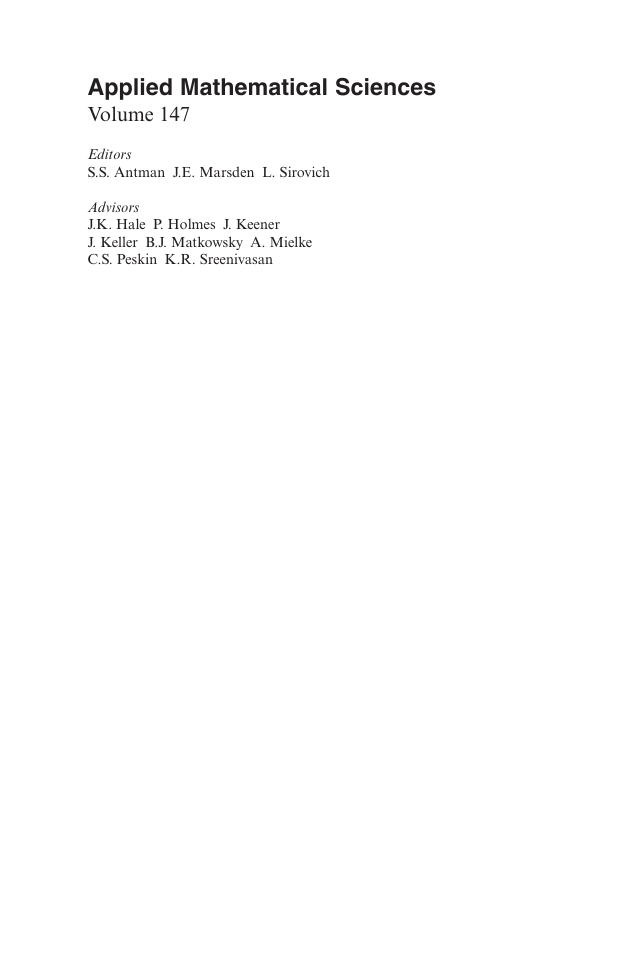
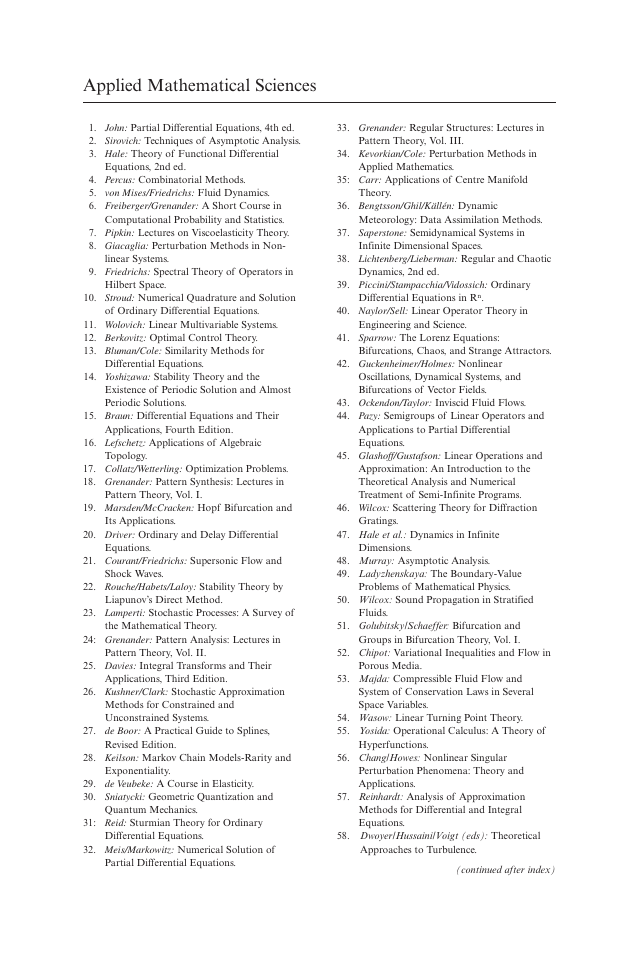
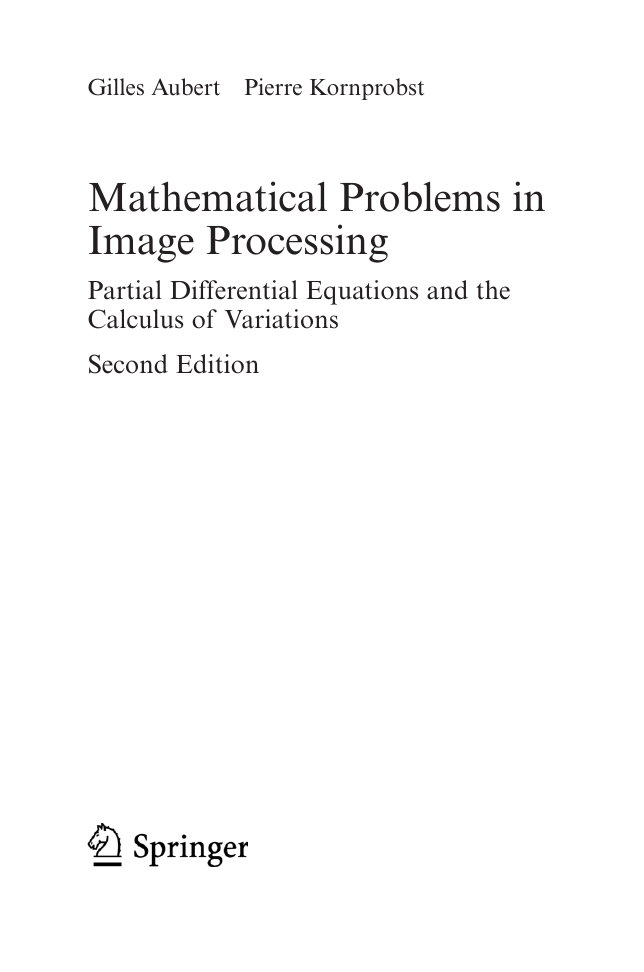
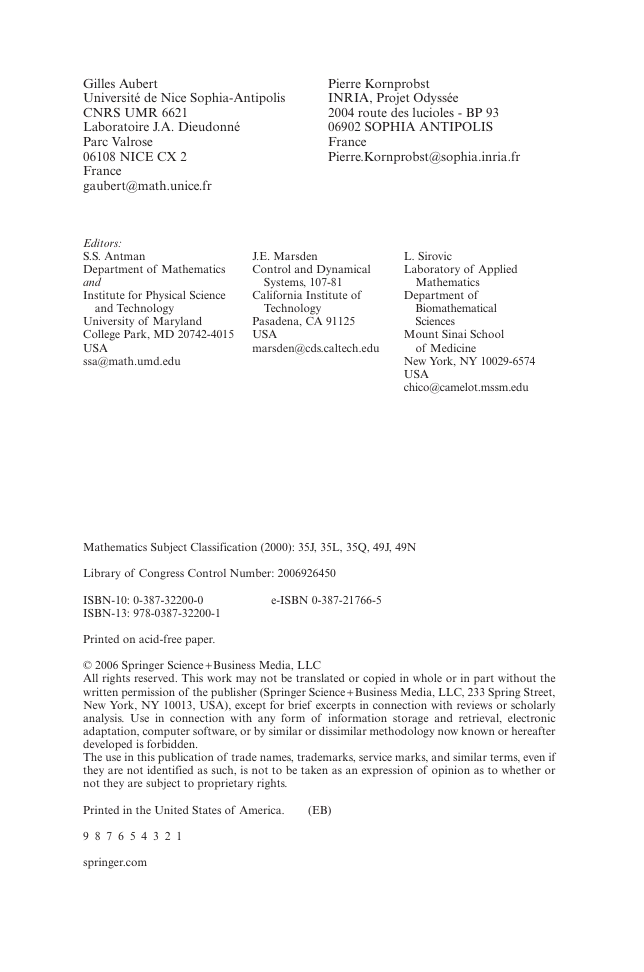
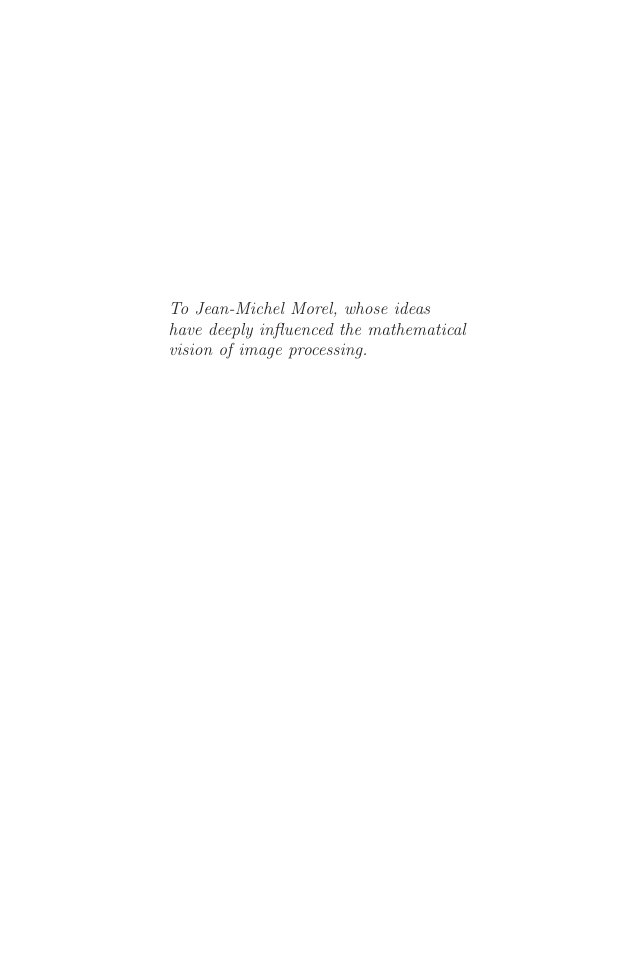
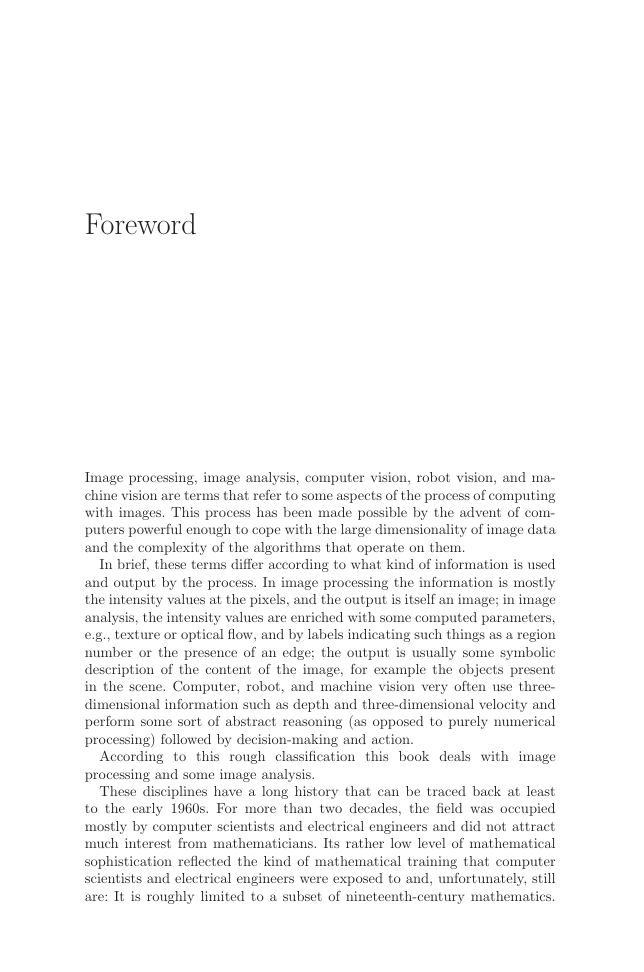
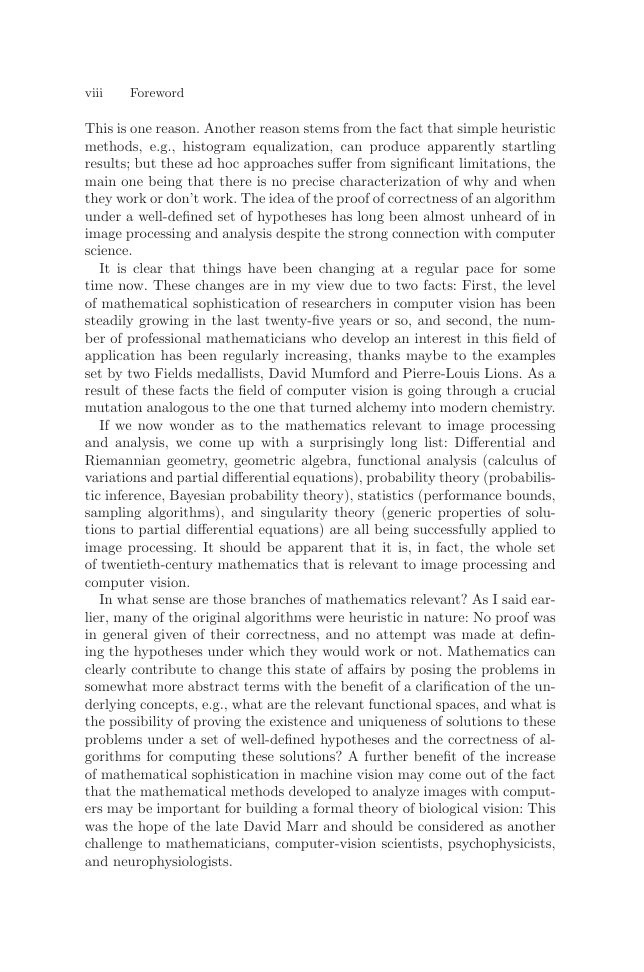
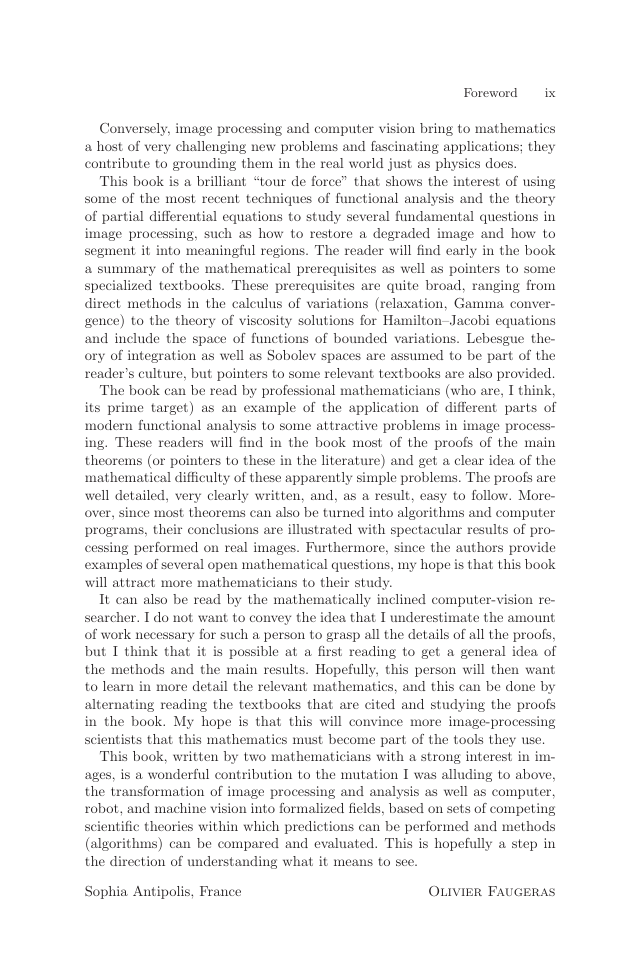








 2023年江西萍乡中考道德与法治真题及答案.doc
2023年江西萍乡中考道德与法治真题及答案.doc 2012年重庆南川中考生物真题及答案.doc
2012年重庆南川中考生物真题及答案.doc 2013年江西师范大学地理学综合及文艺理论基础考研真题.doc
2013年江西师范大学地理学综合及文艺理论基础考研真题.doc 2020年四川甘孜小升初语文真题及答案I卷.doc
2020年四川甘孜小升初语文真题及答案I卷.doc 2020年注册岩土工程师专业基础考试真题及答案.doc
2020年注册岩土工程师专业基础考试真题及答案.doc 2023-2024学年福建省厦门市九年级上学期数学月考试题及答案.doc
2023-2024学年福建省厦门市九年级上学期数学月考试题及答案.doc 2021-2022学年辽宁省沈阳市大东区九年级上学期语文期末试题及答案.doc
2021-2022学年辽宁省沈阳市大东区九年级上学期语文期末试题及答案.doc 2022-2023学年北京东城区初三第一学期物理期末试卷及答案.doc
2022-2023学年北京东城区初三第一学期物理期末试卷及答案.doc 2018上半年江西教师资格初中地理学科知识与教学能力真题及答案.doc
2018上半年江西教师资格初中地理学科知识与教学能力真题及答案.doc 2012年河北国家公务员申论考试真题及答案-省级.doc
2012年河北国家公务员申论考试真题及答案-省级.doc 2020-2021学年江苏省扬州市江都区邵樊片九年级上学期数学第一次质量检测试题及答案.doc
2020-2021学年江苏省扬州市江都区邵樊片九年级上学期数学第一次质量检测试题及答案.doc 2022下半年黑龙江教师资格证中学综合素质真题及答案.doc
2022下半年黑龙江教师资格证中学综合素质真题及答案.doc